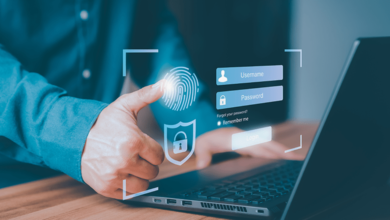The Future of Cybersecurity: Trends to Watch

The future of cybersecurity is increasingly defined by significant trends that organizations must address. The integration of artificial intelligence for threat detection is becoming essential. Meanwhile, the adoption of Zero Trust Architecture is reshaping access management protocols. Additionally, the proliferation of IoT devices presents unique security challenges. As regulatory frameworks evolve, compliance and data privacy will also demand attention. Understanding these trends is crucial for navigating the complexities of tomorrow’s digital landscape.
The Rise of Artificial Intelligence in Cybersecurity
As organizations increasingly face sophisticated cyber threats, the integration of artificial intelligence (AI) into cybersecurity strategies has emerged as a pivotal trend.
Machine learning algorithms enhance threat detection by analyzing patterns and identifying anomalies in real-time. This proactive approach empowers organizations to respond swiftly to potential breaches, thereby safeguarding sensitive information and ensuring operational continuity in an increasingly interconnected digital landscape.
See also: Safety Tips and Techniques for Using Branding Iron for Wood
Embracing Zero Trust Architecture
With the increasing frequency of data breaches and cyberattacks, organizations are reevaluating their security frameworks and increasingly adopting Zero Trust Architecture (ZTA) as a critical defense strategy.
ZTA emphasizes rigorous identity verification and stringent access management, ensuring that users are granted minimal access based on verified needs.
This proactive approach mitigates risks and empowers organizations to protect sensitive data while maintaining operational flexibility.
The Growing Importance of IoT Security
The surge in Internet of Things (IoT) devices has created unprecedented opportunities for innovation and efficiency across various sectors; however, it has also introduced significant vulnerabilities that organizations must address.
Ensuring smart device safety requires a proactive approach to mitigate IoT vulnerabilities. By implementing robust security measures and fostering a culture of awareness, organizations can safeguard their networks and enhance overall cybersecurity resilience.
Enhanced Regulatory Compliance and Data Privacy Measures
Organizations increasingly face a landscape shaped by heightened regulatory compliance and stringent data privacy measures, necessitating a thorough understanding of evolving legal requirements.
As data protection becomes paramount, businesses must adopt robust compliance frameworks to safeguard sensitive information.
Proactive strategies not only enhance security but also foster consumer trust, ultimately allowing organizations to navigate the complexities of legal landscapes while promoting individual privacy rights.
Conclusion
As the digital landscape evolves, the juxtaposition of advanced threats and innovative defenses becomes increasingly apparent. Organizations face the dual challenge of leveraging artificial intelligence while adopting Zero Trust principles to safeguard sensitive data amid a surge in IoT devices. Enhanced regulatory frameworks will further complicate this dynamic, demanding proactive measures to ensure compliance. Ultimately, the future of cybersecurity hinges on a delicate balance between embracing technological advancements and maintaining robust security protocols to protect against an ever-changing array of threats.




